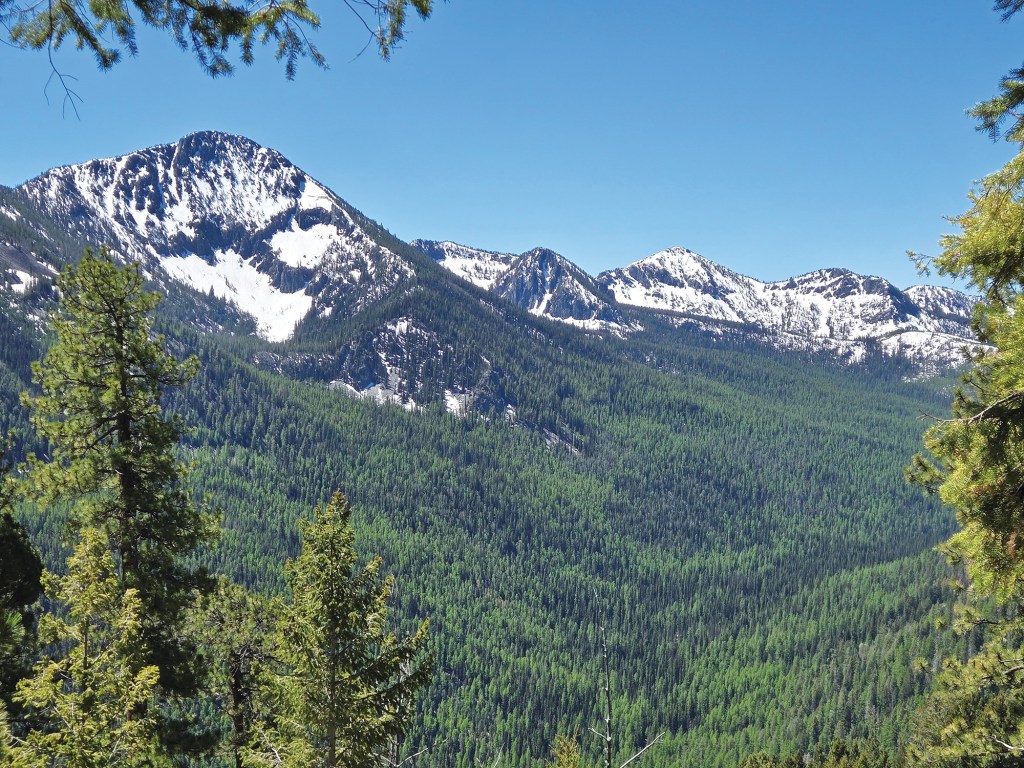EDITORIAL: Potential positives, and negatives, in federal proposal to sell public lands
Published 8:53 am Thursday, June 19, 2025

- Red Mountain, at left, the third-highest peak in the Elkhorn Mountains at 8,928 feet, seen from the slopes of Twin Mountain, the fourth-highest peak at 8,896 feet, on May 30, 2025. (Jayson Jacoby/Baker City Herald)
A Republican-led proposal to sell about 3.3 million acres of public land in the West, potentially including parcels in Oregon, is an intriguing idea.
Done with reasonable consideration and care, the concept could boost property tax revenue, help with the housing shortage and simplify management, transferring to private ownership parcels of public land that are surrounded by private property and lack legal public access now.
But selling swathes of public land carries the obvious risk of closing off lands that have been open to everyone — for hunting, hiking and a host of other pursuits.
Trending
The proposal is part of a federal budget bill the U.S. Senate is considering.
A provision in the bill would require the federal government, by 2030, to sell up to 3.3 million acres of public land — at least 1,225,000 acres the federal Bureau of Land Management oversees but not more than 1,837,500 acres, and at least 965,000 acres of national forests but not more than 1,447,500 acres.
Public land in 11 states would be eligible — Alaska, Arizona, California, Colorado, Idaho, Nevada, New Mexico, Oregon, Utah, Washington and Wyoming.
About 53% of land in Oregon — 32.2 million acres — is in federal ownership, divided almost equally between the BLM and the U.S. Forest Service.
Five states have more federal land than Oregon. Alaska, not surprisingly, tops the list by a wide margin, with nearly 223 million acres. Then comes Nevada (56.2 million acres), California (45.5 million), Utah (33.3 million) and Idaho (32.8 million).
Significant chunks of public land, including in Northeastern Oregon, would be exempt from sale under the provision. These include wilderness areas, national parks and monuments, national wildlife refuges, national recreation areas, wild and scenic rivers and national scenic, historic and recreation trails.
Trending
In Northeastern Oregon, public lands exempt from the provision in the Senate bill include the 652,000-acre Hells Canyon National Recreation Area (portions of which are in Idaho), and several wilderness areas, including the Eagle Cap, Oregon’s biggest at 365,000 acres, including parts of Wallowa, Union and Baker counties. In all, about 800,000 acres are designated wilderness in the region.
There also are several wild and scenic rivers in Northeastern Oregon, as well as two national historic trails (the Oregon Trail and the Nez Perce Nee-Mee-Poo Trail). The Elkhorn Crest Trail west of Baker City is a national recreation trail.
The provision requires that public land that is sold be used “for the development of housing or to address associated community needs.” The provision doesn’t define “community needs,” leaving that to the Interior secretary (who oversees BLM land) and Agriculture secretary (national forests). That lack of certainty is troubling, leaving open the possibility that public land could be sold for almost any reason.
The provision also mandates the two secretaries, within 60 days of the bill’s passage, compile a list of tracts that could be offered for sale. The secretaries would be required, before choosing which parcels to offer, to consult with the governors of affected states, local governments such as counties, and Indian tribes.
The provision states the choice of which parcels to offer would be based on these priorities:
• Parcels nominated by a state or local government.
• Parcels “adjacent to existing developed areas.”
• Parcels that have “access to existing infrastructure.”
• Parcels “suitable for residential housing.”
• “Isolated tracts that are inefficient to manage.”
In Northeastern Oregon, much of the federal land is neither adjacent to a developed area or close to existing infrastructure. That would seem to make the land less than suitable for residential housing. The situation is quite different in, for instance, parts of Nevada, where BLM land adjoins cities such as Las Vegas.
But some federal parcels in our region do meet the criteria of being isolated and inefficient to manage. Indeed, the BLM and Forest Service have during the past few decades proposed, and in some cases completed, land swaps to consolidate properties and avoid having scattered islands of public land. Those were land swaps, however, with the federal government trading public land for private. The new provision calls for direct sales of public land. Ninety percent of sales proceeds would go to the federal treasury. Of the rest, 5% would go to the unit of local government with sole jurisdiction over the tract, and 5% to the “deferred maintenance backlog, for either the BLM or Forest Service, in the state where the tract is located.
In eastern Baker County, there are more than two dozen parcels of public land — all of which the BLM manages — surrounded by private land that lack legal easements. That means the public can’t get to those public parcels without trespassing. They are public in name only.
Selling some of those parcels would not reduce public access — it doesn’t exist now — but it would put those properties onto the property tax rolls, generating money for the county and, depending on the site, schools, libraries and other services such as mosquito and noxious weed control.
On the other hand, the provision has the potential to transfer from public ownership properties that are accessible to people and that are frequently used. Selling those parcels likely would result in “no trespassing” signs popping up like mushrooms after a spring rain.
There’s no bargain in that except, perhaps, for the buyer who would gain land that used to belong to all of us.
Jayson Jacoby is the editor of the Baker City Herald. Contact him at 541-518-2088 or jayson.jacoby @bakercityherald.com.









